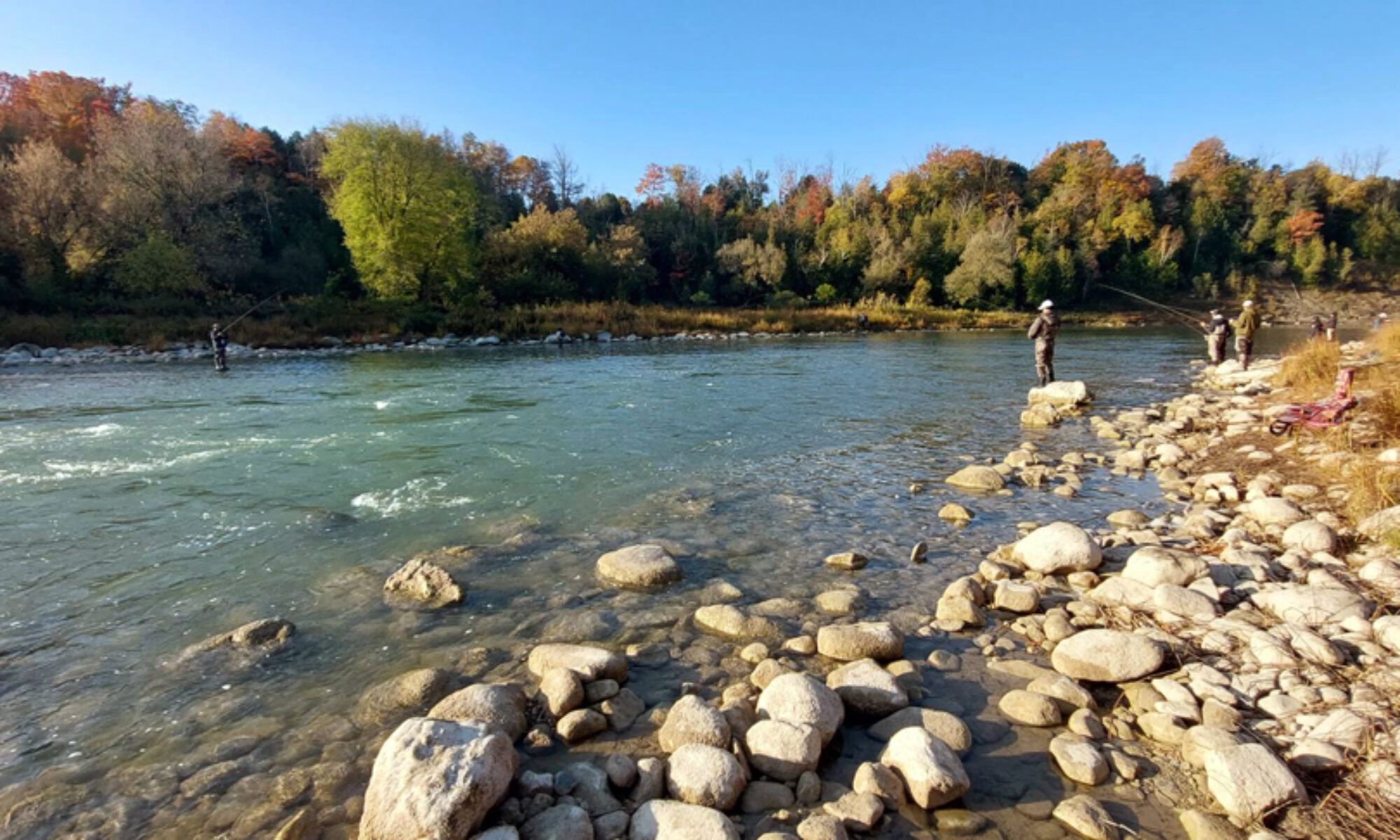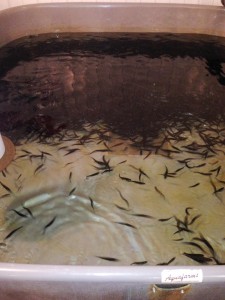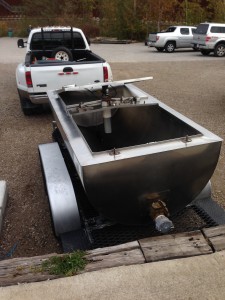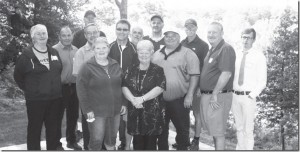To: Mr. Gary Christie, President,
My name is Jo Chisholm; I am part of a group of neighbours in the township of Southgate near Holstein who are objecting to the cluster of gravel pits that have sprung up in the last four years in approx. a 3 sq. km. radius along a glacial moraine adjacent to the Beatty-Saugeen River, a spring-fed headwater of the Saugeen River.
I read the article on your web site Saugeen and Its Tributaries which started out as an enjoyable
fishing trip on the Saugeen River in 2007. The paragraph heading, “All is Not Well in Paradise” referencing human industry i.e., aggregate extraction etc., caught my attention. This article was written in 2007 and the author has a premonition of the future “that as gravel reserves closer to the GTA are exhausted better transportation corridors are developed to bring these gravels. . . [to] major markets of southern Ontario.” This premonition has been unfolding for the past six years in our township with the unprecedented approval of gravel pits in close proximity to the Beatty Saugeen River. The author of the article indicates that more studies are required.
As the Beatty Saugeen is a spring-fed headwater of the Saugeen, given your rainbow trout stocking programs in the Saugeen River, we thought you might be interested in this development. We understand, that for several years, you have been involved with rainbow trout stocking efforts along the Saugeen, and years prior to that stocking rainbow trout programs further upstream along the Beatty- Saugeen (perhaps the latter was the MNR?). The Beatty-Saugeen up to the Orchard dam, according to the Ministry of Natural Resources (MNR), has been a designated fish sanctuary for years. The section of river immediately downstream of Orchard is a remarkable trout habitat boasting rainbow trout, brown trout, and local brook trout. It is rare to experience three species of trout occupying the same stretch of river.
Recently, Reeves Construction, have announced they will be submitting a complete application for a permit to extract aggregate close to the Orchard dam. Specifically, there is a pond close to the pit site which feeds into the Beatty Saugeen Watershed. Given your ongoing stocking programs, we thought this might be of interest to you.
Further complicating the situation, the MNR who monitors gravel pits for compliance, is so
understaffed they can barely keep their heads above water with day-to-day duties. Their case load is so high, one aggregate technician admitted to a case-load of 400 gravel pits—I do not believe there is enough time for staff to perform adequate studies. In fact, the entire aggregate industry “self-monitors” annually, with MNR technicians only reviewing industry generated compliance reports. With such case- loads and self-monitoring, it has been proven that non-compliance issues fall through the cracks. In other words, when a gravel company completes its annual check-list, it’s akin to the “fox guarding the hen house.” Valuable data that could verify the impact of a gravel pit on the surrounding environment, i.e., Beatty Saugeen River, is unavailable.
I am gathering information that might support our concern for fish habitat in the Beatty Saugeen River, as well as our concern for the cumulative effect of the 4 pits plus 3 applications which are in close proximity to flood plain, wetlands and the river all the way down to Orchardville. The pits could have a significant impact on the surrounding watershed, specifically the headwaters of the Saugeen River.
Further upstream the Beatty Saugeen River (east of the Orchard dam) another pit is being considered. Called, the Peyton Pit, the site plan indicates gravel will be extracted up to the flood plain of the river and wetland lands along both of its sides. There are plans to build a bridge across the river to transport gravel from one side to the other. This bridge becomes the haul route from Grey Road 9 to the pit on the north side of the river and traffic studies indicate approximately 30 trucks in and 30 trucks out totaling approximately 60 trucks per a day. Further, the construction of bridge may disrupt the flow of the river and disturb the riverbed which could destroy fish habitat, as well, the licensed pit boundary north of the river is within approximately 30m of river’s bank. The site plan indicates that silt fences, setback 30m from the river, will be used to mitigate silt erosion into the river. Studies indicate the silt fences require constant maintenance and inspection and could be destroyed during a storm when they are most needed. As you know, silt and trout do not mix. Even fine accumulations of silt can disrupt spawning activity. This section of the Beatty Saugeen has resident Brook Trout and occasionally Brown Trout.
Section 35(d) of the Federal Fisheries Act:
Section 35 (d) “No person shall carry on any work, undertaking or activity that results in serious harm to fish that are part of a commercial, recreational or Aboriginal fishery, or to fish that support such a fishery”.
Your newsletters indicate increasing water temperatures can endanger fish—small fluctuations in water temperature can be lethal to trout. When gravel is extracted to within 1.5 meters of the water table (often as much as 50 or more feet of percolating gravel can be extracted) it changes the topography of the land, the percolation rate of surface water, and the temperature of this percolated water. Gravel and sand is “natures natural filter.” Once removed through extraction, water tables can be affected by silt, and the temperature of run-off water may increase. The combined effects of this in close proximity to trout habitat, are a concern. In reference to your newsletter, you can see that it is not only poachers who are a threat to fish.
Various MNR Reports and SVCA Reports regarding watersheds and “Land Use” include agricultural and recreational industry but exclude aggregate industry? The reports provide recommendations to the agricultural and recreational industries to reduce their impact on watersheds…I would have thought that aggregate industry would also have an impact.
Our group is for better management of aggregate resources with more focus on the safety of the environment; greater setbacks from watersheds, fish habitat, forests and a better plan to address the cumulative and cluster effect.
We would appreciate any information or support the Ontario Steelheaders Association and your partner the Lake Huron Fishing Club could throw our way.
Thank you for taking the time to read my email.
Best regards,
Jo Chisholm






